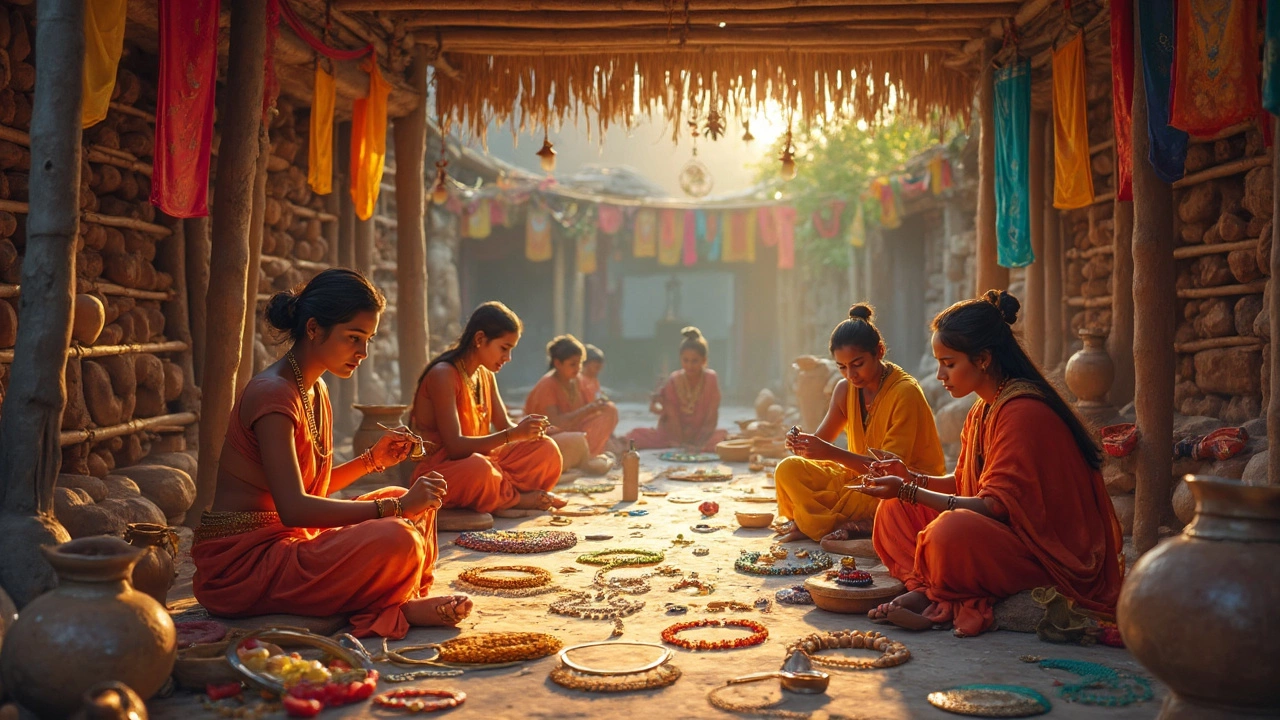Ancient Adornments – Timeless Indian Jewelry
When talking about ancient adornments, the classic jewelry styles that have been part of Indian culture for centuries. Also known as traditional Indian jewelry, it reflects religious beliefs, social status, and regional art. Ancient adornments encompass a wide range of pieces – from the sacred mangalsutra, a necklace tied by the groom during a Hindu wedding to the everyday nose pin, a small stud that marks cultural identity and facial aesthetics. These items require an understanding of cultural symbolism and craftsmanship, because the story behind each piece often determines how it’s worn today. For example, a gold chain isn’t just a metal strip; it’s a gold jewelry, a status symbol and an investment that has endured through dynasties that can still be paired with a modern outfit. Likewise, the sparkle of a diamond pendant isn’t merely about luxury – it’s tied to the legacy of Surat, the diamond capital, and shows how ancient preferences evolved into today’s global market. By linking these elements, we see that ancient adornments influence modern style choices, require knowledge of regional customs, and often guide buying decisions for both heritage and fashion.
Understanding the roots of each piece helps you pick the right one for any occasion. Take the mangalsutra: its design varies from simple gold chains to intricate gemstone‑laden pendants, each style speaking to a different community’s tradition. The nose pin, meanwhile, changes with face shape, nose cartilage, and even seasonal fashion trends – a thin stud works for a minimalist look, while a tiny hoop adds a bold touch. Gold jewelry comes in 22K and 24K purity levels, each affecting durability and price; knowing the 750 hallmark tells you the piece is 18‑carat gold, a key factor for long‑term wear. Diamonds, on the other hand, bring a different set of attributes: cut, clarity, color, and carat weight determine value, and Indian cutting hubs offer competitive pricing compared to the US market. When you combine these insights, you get a toolkit for curating a personal collection that honors history while staying fresh.
Below you’ll find a curated selection of articles that dive deeper into each of these facets – from wedding rituals around the mangalsutra to practical tips on choosing a nose pin that flatters your face, from decoding gold purity stamps to comparing diamond prices across borders. Whether you’re a first‑time buyer, a seasoned collector, or just curious about the stories behind your favorite pieces, the posts ahead will give you clear, actionable guidance to make informed choices and appreciate the rich heritage of ancient adornments.
